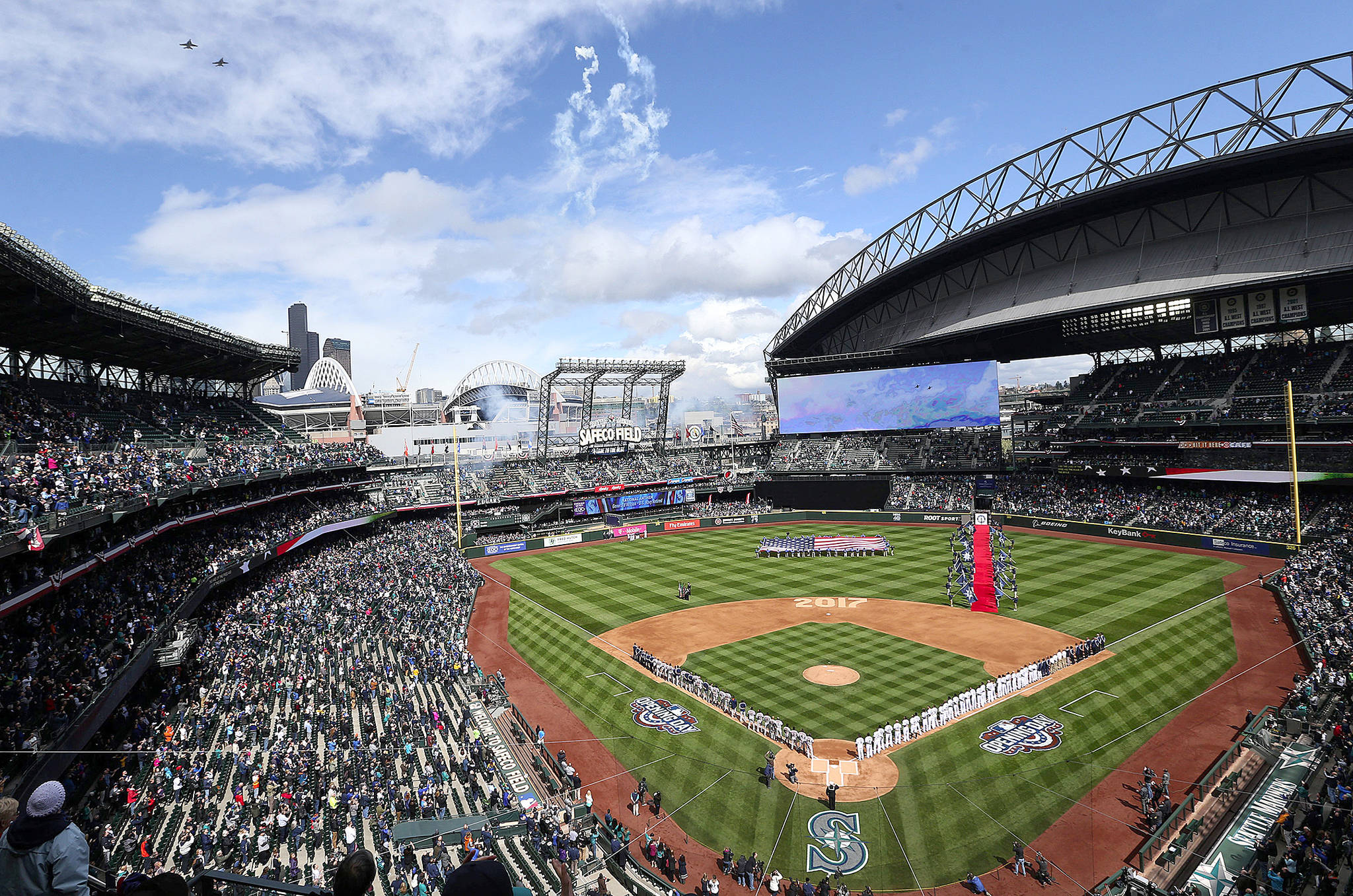Chris Van Dyk, the Bainbridge Island resident who led the charge against publicly financed sports stadiums in the 1990s, was remembered as a prophet without honor in a recent Seattle Times column.
I can’t bring myself to entirely agree.
The columnist, Danny Westneat, persuasively argued that Van Dyk was ahead of his time in demanding that millionaire and billionaire pro sports owners pay their own bills on stadium construction. Competing groups currently battling to build privately financed basketball-hockey arenas in Seattle, the columnist contended, represent evidence that Van Dyk was right all along.
Well, maybe.
It is true that, in the vast majority of cases, professional franchise owners have more than sufficient capital to finance their own sporting playpens. In addition, numerous studies have concluded that the construction of new stadiums have provided little if any economic benefit to their communities.
But there was one small detail absent from the column. Had publicly financed stadiums for baseball (Safeco Field) and football-soccer (CenturyLink Field) not been approved some two decades ago, there’s an excellent chance there would be no professional sports in Seattle today.
In the mid-1990s, the Seahawks were literally on their way out of town. The Mariners were up for sale. Since the current franchise wasn’t even established until 2007, the price wasn’t right for Drew Carey to invest in the Sounders.
Right or wrong, publicly financed stadiums were the norm 20 years ago. If one city refused to build one, franchise owners could find a dozen communities willing to meet their demands.
Seattle was particularly vulnerable to relocation threats because it was saddled with a terminally dysfunctional multi-purpose stadium.
The Kingdome was horrendously ill-suited for baseball, was only marginally better for football and lacked such amenities as a sufficient number of women’s restrooms. Because it was owned by King County and didn’t contain many luxury boxes, it was not a profitable venue for franchise owners. Although constructed less than 20 years earlier, it was literally falling apart by the 1990s.
Had Safeco Field not been built, the Mariners almost certainly would have been sold to the same Washington, D.C., group that later pilfered the Expos from Montreal.
Then-Seahawks owner Ken Behring had loaded the team’s equipment in vans and shipped it to Southern California in 1996. After a court order forced a temporary halt to the move, Paul Allen agreed to buy the club — but only on the condition that a publicly financed stadium replace the Kingdome.
One of the world’s richest men, Allen clearly could have funded his own stadium. There are those who believe that he would have done so out of civic pride had the stadium bond issue been rejected.
But Allen didn’t sound like he was bluffing with the campaign ad statement, “If you say no, that means you no to me, too. Because I’m not going to do it without you.”
Had Allen passed on the purchase agreement, franchise ownership would have reverted back to Behring. And the Seahawks undoubtedly would be playing in Los Angeles or Anaheim today.
The public votes on Seattle’s stadiums have been distorted beyond recognition over the years. Another Seattle columnist wrote a few months ago that the baseball stadium was “famously rejected” and the football facility “narrowly approved.”
The 51 percent approval rate on the football stadium was indeed far from a mandate. But it was a veritable landslide compared to the vote on the baseball stadium. The latter was passing on election night, but was eventually defeated when absentee ballots were counted.
Given that the public was evenly divided, the state legislature’s subsequent intervention with a financing package was appropriate.
I don’t believe, incidentally, that the failure of government officials to back a publicly financed arena proposal cost Seattle the SuperSonics.
Sonic owner Clayton Bennett wanted to move the franchise to his native Oklahoma City from the time he purchased the Sonics from Starbucks magnate Howard Schultz. Had the public and government officials somehow agreed to his outrageous arena terms, he would have found another reason to relocate.
In the final analysis, the recent trend toward privately financed stadiums is a positive development for the public at large. Van Dyk and his ilk deserve a measure of credit for being ahead of the curve on that issue.
But activist groups following his lead should be warned that not all communities are using the same playbook.
Vacationing in Southern California in the summer of 2016, I was struck by the number of San Diego residents who were taking pride in saying no to a publicly financed facility that would have replaced a football stadium deemed worthy of hosting three Super Bowls. Many naively believed that their reasoning and San Diego’s long pro football tradition would gain a sympathetic ear from the National Football League hierarchy.
A few months after the stadium proposal was overwhelmingly rejected, however, the San Diego Chargers became the Los Angeles Chargers.
Athletic stadiums may not be a financial bonanza to the cities, but they provide a quality-of-life benefit and communal bond that can’t be measured in dollars and cents. It’s unlikely, for example, that Northwesterners would be spending Sundays wearing 12th man jerseys if the Seahawks were representing Los Angeles.
Then there’s this: Seattle traded arguably the worst stadium in North America for two of the best.
In the long run, Washington taxpayers got their money’s worth.



